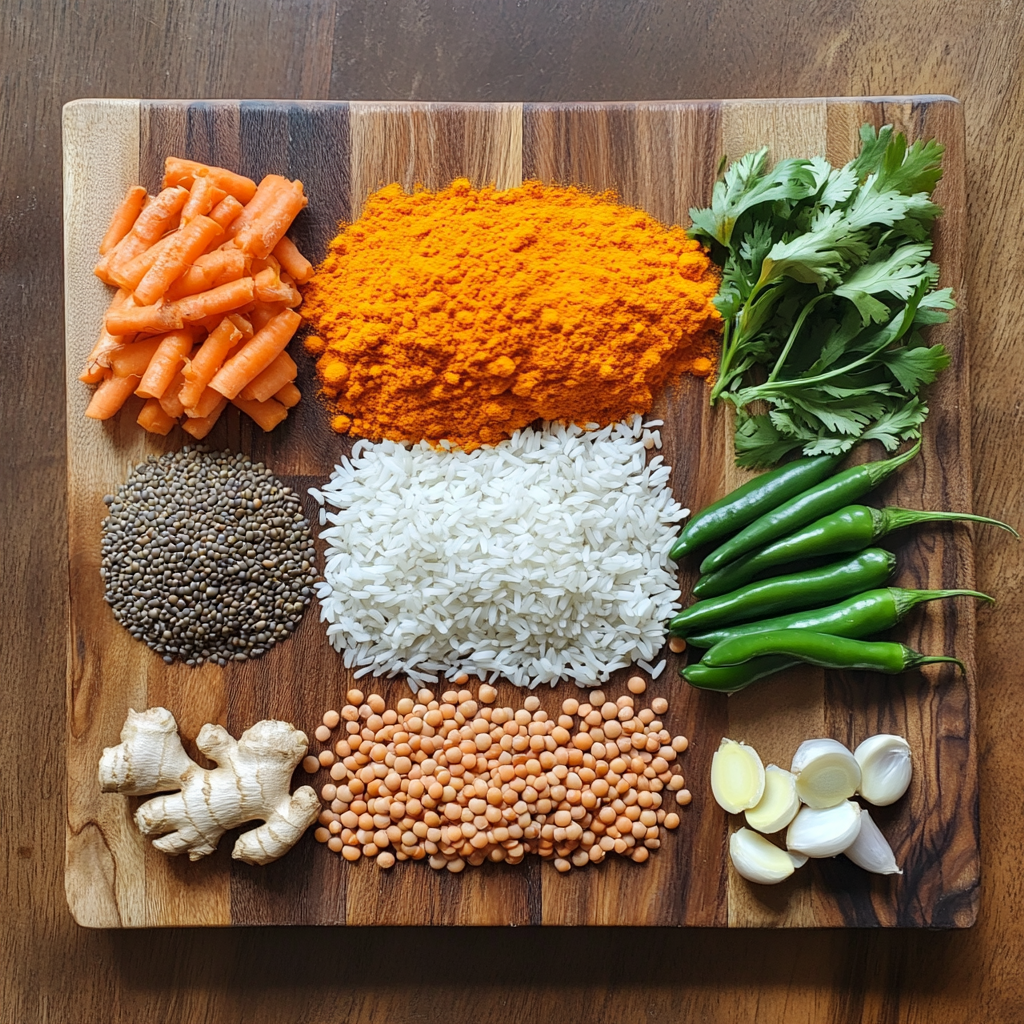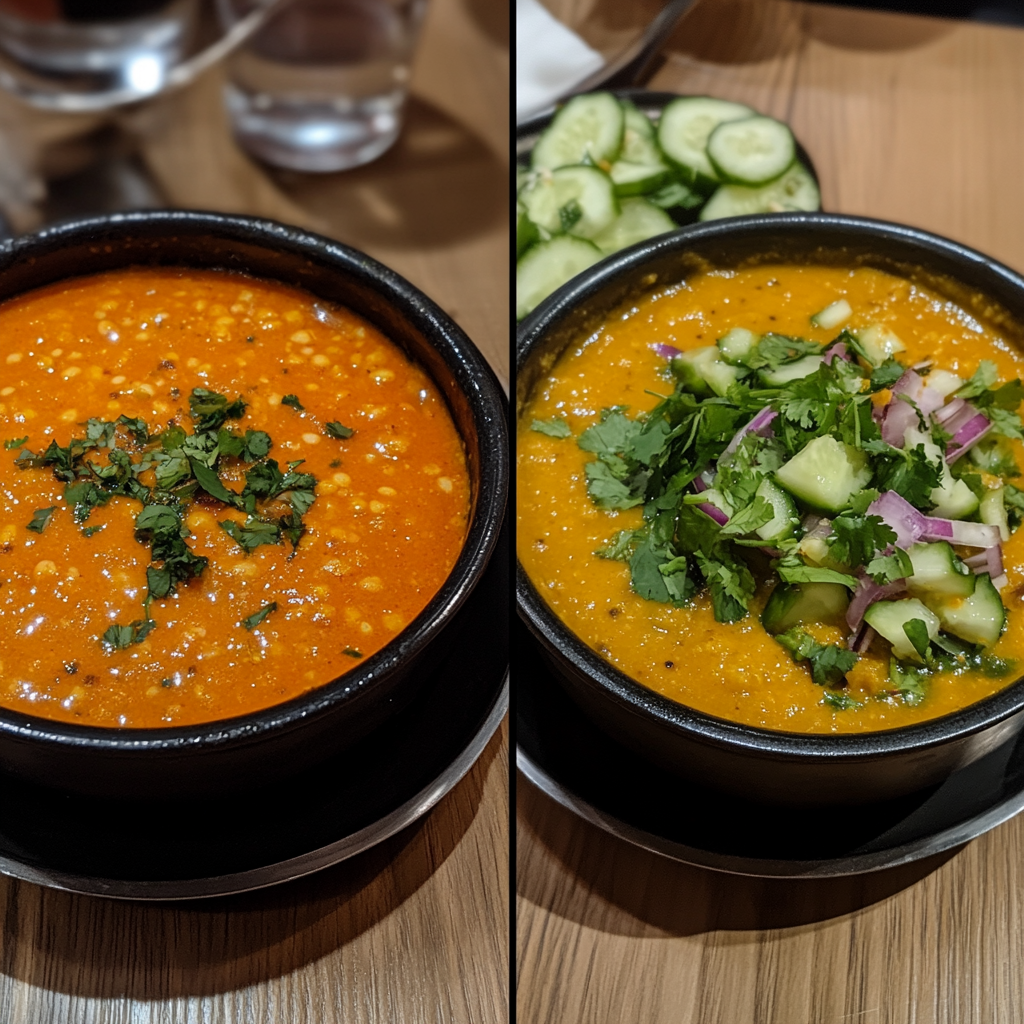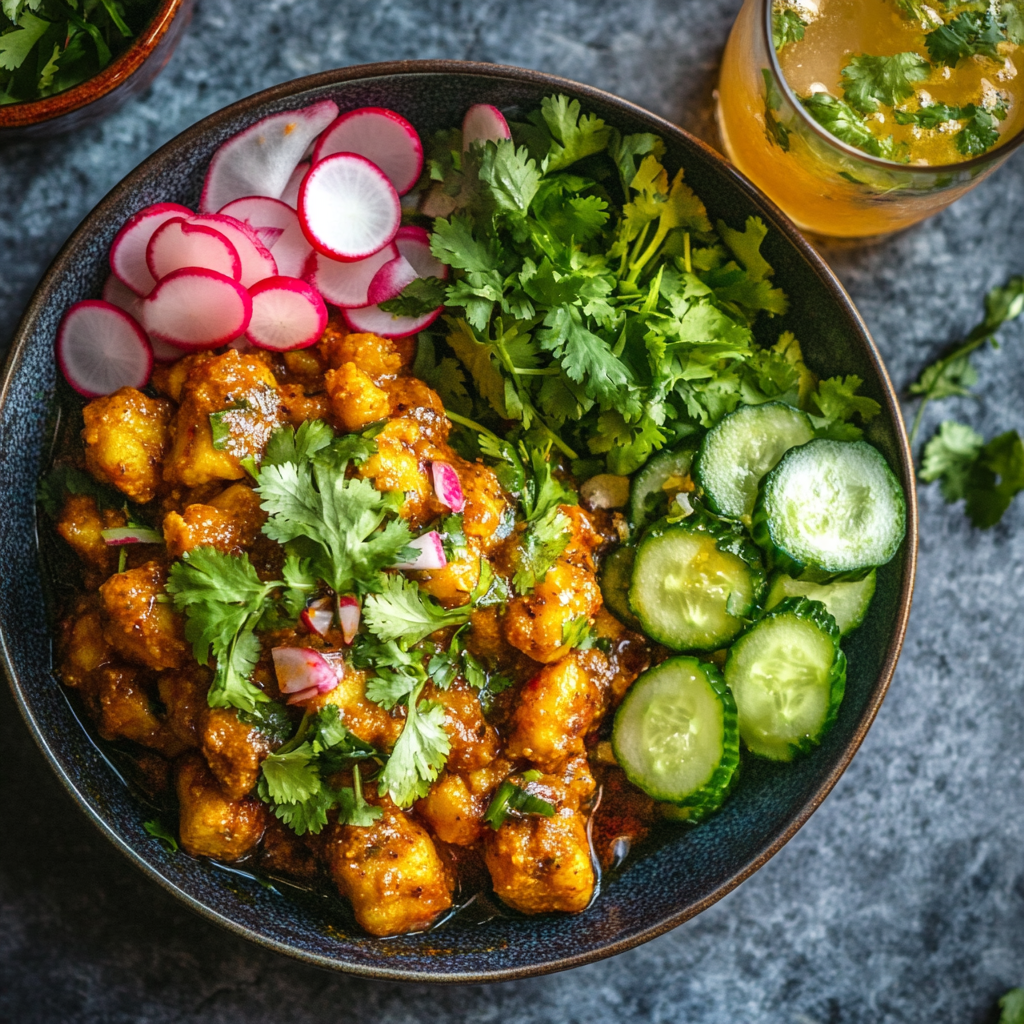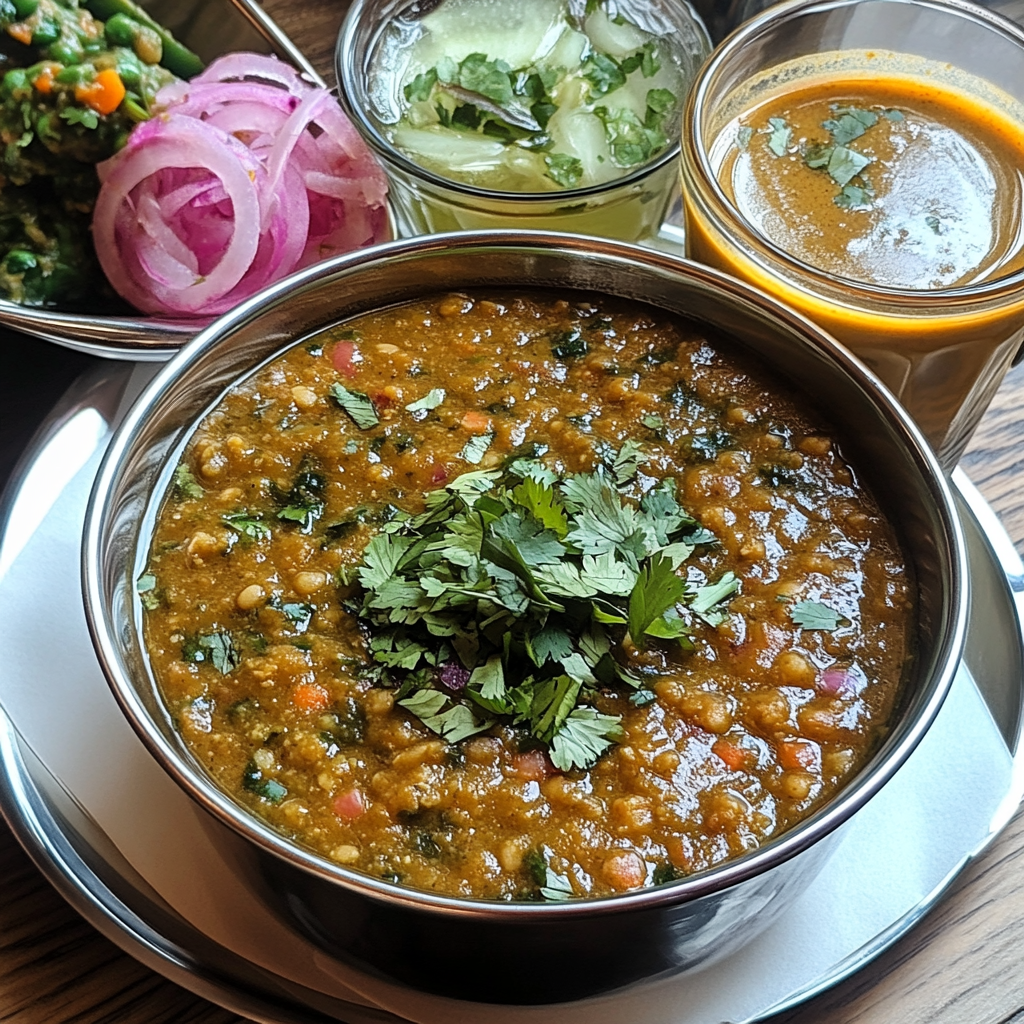Nepali cuisine, deeply rooted in cultural traditions and the country’s rich agricultural landscape, is a true culinary experience for anyone looking to expand their palate. From hearty lentil soups to spiced vegetable curries, Nepali food recipes offer a symphony of flavors that are both exotic and comforting. Whether you’re vegan, gluten-free, or following a traditional diet, there’s something for everyone in Nepali cuisine. Each dish is carefully crafted with fresh, local ingredients and a rich blend of spices, making Nepali food not only delicious but also incredibly nutritious.
This guide will walk you through the essential ingredients, tools, and step-by-step instructions to help you recreate authentic Nepali dishes at home. We’ll also provide variations for different diets, expert cooking tips, nutritional information, and serving suggestions to make your meal complete. For those looking for more options, be sure to explore our Nepali breakfast recipes, which are perfect for starting your day with a wholesome, flavorful meal.
Ingredients Overview: The Essential Ingredients for Authentic Nepali Food
When it comes to Nepali food recipes, ingredients are the soul of each dish. Traditional Nepali cooking relies heavily on locally sourced, fresh ingredients that reflect the country’s unique geography. The use of herbs and spices like turmeric, cumin, coriander, and mustard seeds is common across various dishes, providing layers of flavor and depth. Whether you’re preparing Dal Bhat, a lentil-based dish served with rice, or Aloo Tama, a potato and bamboo shoot curry, you’ll notice that the ingredients used are wholesome, nutritious, and full of flavor.
Common Ingredients in Nepali Cuisine
- Rice: The foundation of most Nepali meals, rice is a staple ingredient served alongside curries, lentils, and vegetables.
- Lentils (Dal): High in protein and versatile, lentils are a key ingredient in Nepali soups, stews, and curries.
- Spices (Cumin, Coriander, Turmeric, Mustard Seeds): These spices are integral to Nepali food, creating warmth and complexity in each dish.
- Vegetables: Seasonal vegetables like spinach, potatoes, and cauliflower are used extensively in everyday meals.
- Ginger and Garlic: These two ingredients are often used together to add a bold, aromatic flavor to dishes.
- Chilies (Green and Red): Whether fresh or dried, chilies are used to add heat and spice to many Nepali dishes.
- Ghee (Clarified Butter): Ghee is commonly used for frying and tempering spices, adding richness to curries and rice dishes. For a vegan substitute, coconut oil works well.
Ingredient Substitutions for Different Diets
Nepali recipes are incredibly adaptable, allowing you to substitute ingredients to meet your dietary preferences. For instance, you can make gluten-free versions of dishes by substituting rice flour for wheat flour in bread recipes or choosing gluten-free grains. To make your meals vegan, simply replace ghee with plant-based oils like coconut oil or sunflower oil.
For more inspiration on dishes that cater to different diets, check out our Nepali snacks section, where you’ll find a variety of plant-based and gluten-free recipes.

Tools Needed: Essential Kitchen Tools for Cooking Nepali Food Recipes
Cooking Nepali food recipes doesn’t require a high-tech kitchen, but having a few essential tools can make the process much smoother and more efficient. These tools are often simple, but they play a crucial role in creating the rich flavors that define Nepali cuisine. Whether you’re whipping up a batch of steamed momos or preparing a simmering pot of dal, having the right equipment on hand will make your cooking experience enjoyable and efficient.
Must-Have Tools for Nepali Cooking
- Tawa (Flat Skillet): The tawa is a flat skillet often used to cook flatbreads like roti or chapati. If you don’t have a tawa, a cast-iron skillet can work as a substitute.
- Pressure Cooker: A pressure cooker is indispensable for speeding up the cooking of lentils, rice, and beans. It saves time and ensures that your ingredients are perfectly tender.
- Mortar and Pestle: Many Nepali dishes call for freshly ground spices, and a mortar and pestle are perfect for this. Grinding your own spices allows for greater control over texture and flavor.
- Steamer Basket: For dishes like momos (Nepali dumplings), a steamer is essential. You can also use a bamboo steamer for a more traditional method or a metal one if that’s what you have on hand.
- Spice Grinder: While a mortar and pestle are traditional, a spice grinder is a handy alternative if you prefer to save time when preparing your spice mixes.
- Wok or Deep Pan: Ideal for stir-frying vegetables and making curries, a wok allows for even heat distribution, ensuring your vegetables cook evenly and remain crisp.
- Serving Bowls and Plates: Nepali meals are often served in multiple small dishes to showcase the variety of the meal. Having several small bowls or plates for side dishes, chutneys, and rice will help with the presentation.
Alternatives for Common Nepali Cooking Tools
Don’t worry if you don’t have all the specialized tools traditionally used in Nepali kitchens. Here are some alternatives:
- Use a regular saucepan if you don’t have a pressure cooker, but keep in mind that the cooking time for lentils and rice may be longer.
- A non-stick skillet can replace a tawa if you’re making flatbreads like roti or chapati.
- If you don’t have a mortar and pestle, a blender or spice grinder can be used to grind spices.
For more dinner ideas that make use of these tools, check out our Dinner category, which features recipes that require similar kitchen essentials.
Step-by-Step Instructions for Cooking Authentic Nepali Recipes
One of the most beautiful aspects of Nepali food recipes is their simplicity. While the flavors are rich and complex, the process of making these dishes is often straightforward and easy to follow. Below are detailed, step-by-step instructions for preparing two iconic Nepali dishes: Dal Bhat (a classic lentil soup with rice) and Aloo Tama (a tangy potato and bamboo shoot curry).
By following these instructions, even beginners can recreate authentic Nepali dishes at home. Each step is carefully broken down to ensure clarity, allowing you to focus on enjoying the cooking process.
Recipe 1: Dal Bhat (Nepali Lentil Soup with Rice)
Dal Bhat is a staple in almost every Nepali household. It’s a simple yet hearty dish consisting of cooked lentils served with steamed rice. You can also add various side dishes like vegetables, pickles, and chutneys to enhance the meal.
Ingredients:
- 1 cup of split yellow lentils (moong dal)
- 2 cups of water
- 1 teaspoon of turmeric
- 1 teaspoon of cumin seeds
- 2 cloves of garlic, minced
- 1 tablespoon of ghee or oil (use coconut oil for a vegan version)
- Salt to taste
- 1 cup of cooked rice (basmati or jasmine rice works well)
- Fresh coriander leaves for garnish
Instructions:
- Prepare the Lentils: Begin by rinsing the lentils thoroughly under cold water. This helps remove excess starch and ensures that your dal is smooth. Once rinsed, add the lentils to a pressure cooker with 2 cups of water, turmeric, and salt. Cook for about 5-7 minutes until the lentils are soft and tender.
- Make the Tempering: In a separate pan, heat ghee (or coconut oil for vegan) over medium heat. Add cumin seeds and minced garlic, frying them until the garlic turns golden and fragrant. This tempering process, known as ‘tarka,’ is essential for adding depth and aroma to the dal.
- Combine and Simmer: Once the lentils are cooked, pour the tempered spices into the dal. Stir well and let the mixture simmer for an additional 5 minutes, allowing the flavors to meld together. If the dal is too thick, you can add a little water to achieve your desired consistency.
- Serve: Spoon the dal over steamed rice and garnish with fresh coriander leaves. Serve alongside pickles, chutneys, or a side of curried vegetables for a complete meal.
If you enjoy Dal Bhat and want more breakfast recipes with similar cooking methods, be sure to check out our Breakfast section, where you’ll find more delicious, nutritious dishes to start your day.
Recipe 2: Aloo Tama (Potato and Bamboo Shoot Curry)
Aloo Tama is a beloved Nepali curry that combines the earthy flavor of potatoes with the tanginess of fermented bamboo shoots. This dish offers a delightful contrast of textures and tastes, making it a must-try for those exploring Nepali cuisine.
Ingredients:
- 3 medium-sized potatoes, diced
- 1 cup of fermented bamboo shoots (available at Asian markets)
- 1 teaspoon of mustard seeds
- 1 teaspoon of turmeric powder
- 2 green chilies, chopped
- 1 onion, finely sliced
- 2 tomatoes, chopped
- 1 tablespoon of oil (vegetable or mustard oil)
- Salt to taste
- Fresh cilantro for garnish
Instructions:
- Prepare the Spices: Heat oil in a large wok or pan over medium heat. Add mustard seeds and turmeric powder, allowing the mustard seeds to splutter. This is a crucial step in unlocking the rich flavors of the spices.
- Sauté the Vegetables: Add the finely sliced onions and green chilies to the pan, stirring until the onions turn translucent and soft. Then, add the chopped tomatoes and cook until they become soft and pulpy.
- Cook the Potatoes: Stir in the diced potatoes and cook for about 5 minutes, ensuring they are coated in the spice mixture. If needed, add a little water to prevent the potatoes from sticking to the pan.
- Add the Bamboo Shoots: Once the potatoes are partially cooked, mix in the bamboo shoots. Lower the heat and cover the pan, allowing the curry to simmer for another 10-15 minutes. The bamboo shoots will infuse the dish with their signature tangy flavor.
- Final Touch: Once the potatoes are fully cooked, season the dish with salt and garnish with fresh cilantro. Serve hot with rice or flatbreads.
For more delicious vegetable-based curries like Aloo Tama, check out our Dinner section, where we feature a variety of Nepali curries that are perfect for a hearty meal.

Flavor Variations and Dietary Adaptations for Nepali Recipes
One of the most appealing aspects of Nepali food recipes is their versatility. Whether you’re vegan, gluten-free, or looking for low-carb options, you can easily adapt traditional recipes to meet your specific dietary needs. Nepali dishes are inherently flexible, and simple ingredient swaps can transform a traditional dish into something that suits your lifestyle without compromising on flavor.
Vegan and Gluten-Free Variations:
- Dal Bhat: If you’re looking for a vegan version of this beloved dish, simply swap out the ghee for coconut oil or any plant-based oil. You can also experiment with different types of lentils, such as red lentils or green lentils, to add variety to the dish. For a gluten-free option, serve the dal with gluten-free grains like quinoa or millet instead of traditional rice.
- Aloo Tama: This dish is naturally gluten-free, but for a vegan adaptation, you can replace any animal-based oils with vegetable or mustard oil. You can also substitute the regular potatoes with sweet potatoes for a lower-carb version that adds a touch of sweetness to the tangy bamboo shoots.
Low-Carb and Paleo Adaptations:
For those following a low-carb or paleo diet, many Nepali recipes can be easily modified. In place of rice, you can serve your curries with cauliflower rice or leafy greens. Lentils, while high in protein, can be replaced with other legumes like chickpeas or mung beans for a different nutritional profile.
Want to pair your meal with a light, crunchy snack? Check out our Snacks section for ideas on what to serve alongside your dishes, such as roasted chickpeas or vegetable fritters.

Expert Tips for Cooking Perfect Nepali Recipes Every Time
Cooking Nepali food recipes is a rewarding experience, but like any cuisine, there are certain nuances that can take your dish from good to extraordinary. Below are some expert tips to help you avoid common mistakes and bring out the best flavors in your Nepali dishes.
Pro Tips for Cooking Dal Bhat:
- Rinse Lentils Thoroughly: It’s important to rinse lentils under cold water several times before cooking. This helps remove any excess starch, ensuring that your dal is smooth and free of any bitterness.
- Use Fresh Spices: Freshly ground spices make a significant difference in the final taste of your dal. Try using whole cumin seeds and grinding them yourself for a more intense flavor.
- Tempering Spices (Tarka): Don’t skip the tempering process. Adding spices to hot oil or ghee releases their essential oils, infusing your dish with rich, aromatic flavors that can’t be achieved by simply mixing the spices into the lentils.
Pro Tips for Cooking Aloo Tama:
- Soak Fresh Bamboo Shoots: If you’re using fresh bamboo shoots, be sure to soak them in water for at least an hour before cooking. This helps reduce their bitterness and makes them more palatable.
- Add Water Gradually: When cooking potatoes, add water a little at a time to avoid making the curry too watery. The potatoes should absorb the spices, creating a rich, flavorful curry.
- Spice Adjustments: If you prefer a milder dish, reduce the amount of green chilies or omit them altogether. For a spicier version, feel free to add a pinch of red chili powder or more green chilies to suit your taste.
If you’d like to explore more dinner recipes that use similar cooking techniques, check out our Dinner section for ideas on curries and stews that are perfect for a cozy, flavorful meal.
Nutritional Information: The Health Benefits of Key Ingredients in Nepali Recipes
Nepali cuisine is not only delicious but also highly nutritious, thanks to its reliance on fresh, wholesome ingredients. Many of the ingredients used in Nepali food recipes are packed with essential vitamins, minerals, and antioxidants, making them a great addition to any healthy diet. Below, we’ll highlight the nutritional benefits of some key ingredients found in Dal Bhat and Aloo Tama.
Health Benefits of Dal Bhat Ingredients:
- Lentils: Lentils are a powerhouse of plant-based protein, making them an excellent choice for vegetarians and vegans. They’re also rich in iron, folate, and dietary fiber, which helps with digestion and maintaining healthy blood sugar levels.
- Turmeric: Turmeric contains curcumin, a compound with powerful anti-inflammatory and antioxidant properties. Regular consumption of turmeric has been linked to improved brain function and a lower risk of heart disease.
- Cumin Seeds: Cumin is a rich source of iron and aids in digestion. It has been traditionally used in many cultures to promote weight loss and improve blood sugar control.
Health Benefits of Aloo Tama Ingredients:
- Bamboo Shoots: Bamboo shoots are low in calories but high in dietary fiber, which helps with digestion and weight management. They are also a good source of potassium, which can help lower blood pressure.
- Potatoes: While often criticized in modern diets, potatoes are a good source of vitamins C and B6, as well as potassium. When cooked with the skin on, they provide a decent amount of fiber, which helps with digestion.
For more detailed nutritional information on the benefits of these ingredients, take a look at this trusted health blog, where you can learn more about the health benefits of plant-based foods and spices.
Serving Suggestions: How to Complete Your Nepali Meal
No Nepali meal is complete without a few carefully selected side dishes and condiments that enhance the flavors of the main dish. Below are some serving suggestions to help you create a full Nepali meal experience, whether you’re serving Dal Bhat, Aloo Tama, or another traditional dish.
Pairing Ideas for Dal Bhat:
- Pickled Vegetables (Achar): Nepali meals are often served with achar, a type of pickled vegetable chutney that adds a tangy, spicy kick to the dish. You can make your own using fresh cucumbers, tomatoes, or radishes, mixed with chili powder, mustard oil, and garlic.
- Cucumber Raita: For a cooling side, serve your Dal Bhat with a simple cucumber raita, made with diced cucumbers, yogurt, and a sprinkle of cumin powder. This adds a refreshing contrast to the spiced lentils.
- Fried Spinach or Mustard Greens: Lightly fried spinach or mustard greens add a healthy, flavorful green element to your meal. Sauté them with garlic and cumin seeds for a simple but delicious side dish.
Pairing Ideas for Aloo Tama:
- Flatbread (Roti or Chapati): Aloo Tama pairs beautifully with warm flatbreads like roti or chapati. The flatbread can be used to scoop up the curry, making for a hearty and satisfying meal.
- Nepali Chutney (Mula Ko Achar): This radish-based chutney adds a sharp, tangy element to the meal and is a common accompaniment to many Nepali dishes. The combination of spicy and tangy flavors complements the richness of the curry.
For more meal ideas and pairings, explore our Dinner section, where you can find additional Nepali recipes and serving suggestions to complete your meal.

Storage Tips: How to Store and Reheat Nepali Dishes for Maximum Freshness
If you’ve made more than you can eat in one sitting, don’t worry—most Nepali food recipes are easy to store and reheat, retaining their flavor and texture for days. Proper storage is key to maintaining the freshness of your dishes, whether you plan to refrigerate or freeze them. Below are some useful tips for storing and reheating both Dal Bhat and Aloo Tama.
Storage Tips for Dal Bhat:
- Refrigeration: Once cooked, you can store Dal Bhat in an airtight container in the refrigerator for up to 3 days. When reheating, add a little water to loosen the dal, as it tends to thicken when cooled.
- Freezing: Dal freezes very well for up to 3 months. Divide the dal into portion-sized containers for easy reheating. When ready to eat, thaw in the refrigerator overnight and reheat on the stovetop or in the microwave.
Storage Tips for Aloo Tama:
- Refrigeration: Aloo Tama can be stored in the fridge for up to 4 days in an airtight container. When reheating, add a splash of water or broth to bring the curry back to its original consistency.
- Freezing: While potatoes don’t freeze as well as other ingredients, the bamboo shoot curry can be frozen for up to a month. When reheating, be sure to stir frequently to ensure the potatoes don’t become too mushy.
For more storage tips and meal prep ideas, take a look at our Breakfast or Dinner sections, where you’ll find additional recipes and advice on how to store Nepali dishes.
FAQs: Common Questions About Cooking Nepali Food
Can I substitute other types of lentils for moong dal in Dal Bhat?
Yes, you can substitute other lentils such as red lentils, split peas, or even mung beans. Keep in mind that cooking times may vary, so adjust accordingly.
How do I make Aloo Tama less tangy if I don’t like the strong flavor of bamboo shoots?
If you find the bamboo shoots too tangy, try soaking them in water for an hour before cooking. This helps reduce their strong flavor. You can also balance the tanginess by adding a bit of sugar or more potatoes to the curry.
What can I serve with Dal Bhat to make it a complete meal?
Dal Bhat is traditionally served with pickled vegetables (achar), chutneys, and sometimes fried greens like spinach or mustard leaves. Adding these sides makes for a more balanced and flavorful meal.
For more frequently asked questions and similar recipes, check out our Dinner section, where you’ll find tips on cooking Nepali dishes and answers to common cooking queries.
Conclusion: Embrace Nepali Cuisine in Your Kitchen Today
Nepali cuisine offers a rich and diverse range of flavors, textures, and techniques that are both accessible and rewarding for home cooks. Whether you’re preparing a comforting bowl of Dal Bhat or exploring the tangy flavors of Aloo Tama, Nepali food recipes are sure to delight your taste buds. With simple, wholesome ingredients and versatile recipes that can be adapted to suit various dietary preferences, there’s something for everyone in Nepali cuisine.
